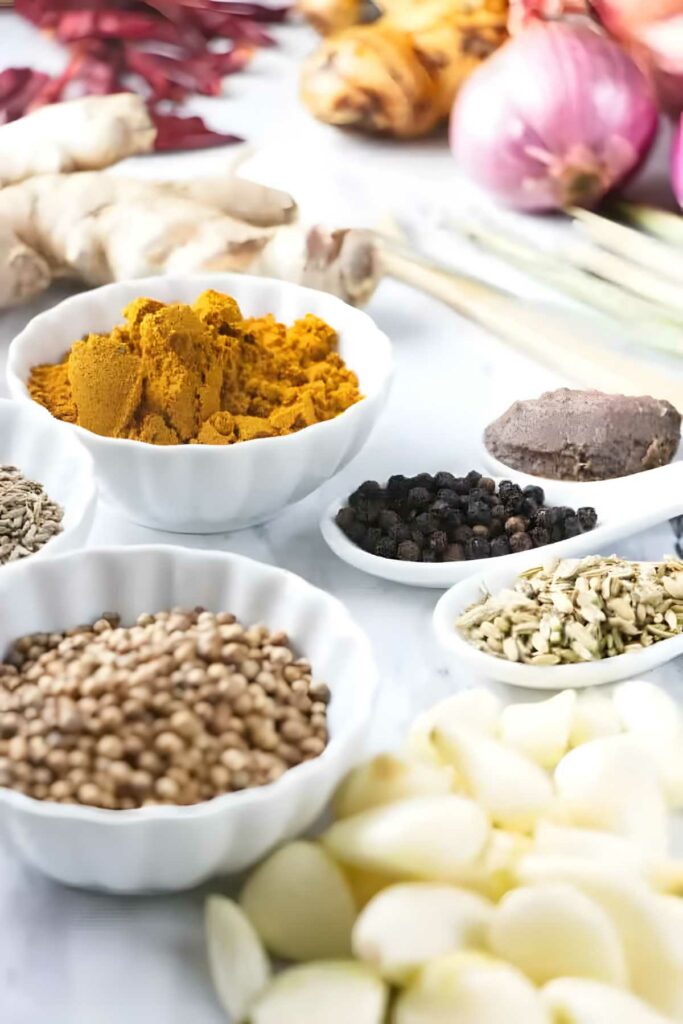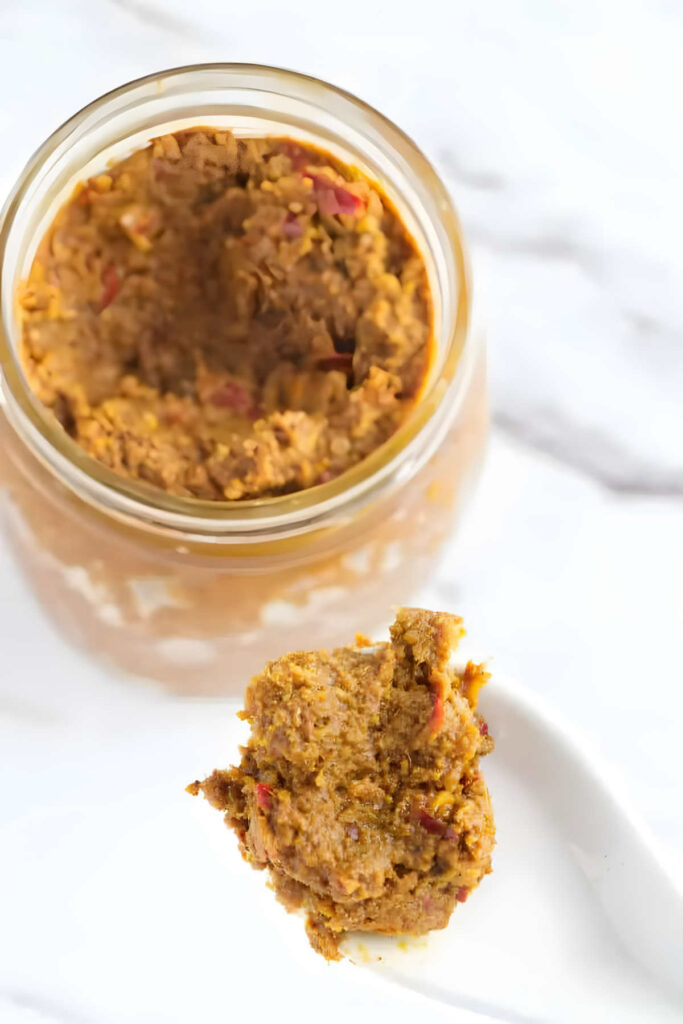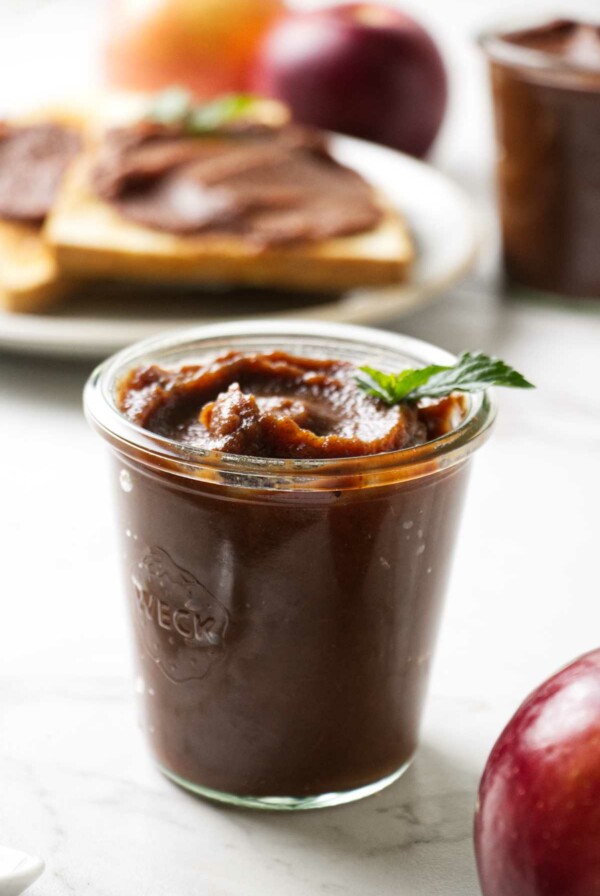This post may contain affiliate links. Please read our disclosure policy. As an Amazon Associate, I earn from qualifying purchases.
This homemade yellow curry paste recipe uses bold spices, fresh herbs, and authentic ingredients to bring serious flavor to your cooking. Forget the store-bought stuff. This Thai curry paste is where it’s at for rich, aromatic curries, zesty sauces, and anything else that could use a little culinary swagger.

Here is Why This Yellow Curry Paste Recipe Works
Packed with Authentic Flavors: Fresh turmeric, galangal, and lemongrass make this paste a flavor bomb that’s straight out of a Thai kitchen. No bland shortcuts here!
Customizable Heat Level: Control the spice by adding more or fewer dried chiles, because not everyone needs to sweat through dinner.
Versatile & Freezer-Friendly: Whip up a batch, freeze it in portions, and you’ve got a go-to curry starter for lazy weeknights or last-minute dinner guests.
Say Goodbye to Store-Bought: This homemade version skips the preservatives and brings the real deal to your plate. Bonus: Your kitchen will smell amazing (eventually).
Use this curry paste to make our coconut chicken curry or salmon coconut curry. It also adds fantastic flavor to soup, rice and noodles.
The Ingredients
- Produce: Dried red chiles, garlic cloves, shallots, fresh lemongrass, fresh galangal root, fresh ginger, fresh turmeric.
- Pantry Seasonings: Coriander seeds, cumin seeds, fennel seeds, black peppercorns, curry powder, salt.
- Condiments: Shrimp paste (or fish sauce).

Variations
Mild Yellow Curry Paste: Reduce the dried chiles to 10 for a milder heat and add an extra tablespoon of lemongrass. Use it for our curry chicken and potatoes.
Sweet and Tangy Curry Paste: Add 1 tablespoon of palm sugar and 1 teaspoon of lime zest to balance the heat with a touch of sweetness. Add this to our einkorn risotto.
Spicier Thai Curry Paste: Double the dried chiles and add 1 teaspoon of red chili flakes for an extra kick of heat. Use this on our Tiger prawn curry.
Tips for Success
- Don’t skip toasting the coriander, cumin, and fennel seeds. It unlocks their full flavor potential.
- Soak the dried chiles until they’re completely soft to avoid chunky bits in your curry paste.
- Pause your food processor occasionally to scrape down the bowl.
- Use Fresh Ingredients. Fresh turmeric, galangal, and lemongrass make a world of difference in taste. Dried substitutes will work in a pinch, but fresh is best!
- Portion the paste into ice cube trays and freeze it for easy single-use servings.
- Store leftover shrimp paste in a tightly sealed container to keep the fridge smell-free.
- Fresh turmeric can stain your food processor bowl. Wash the bowl immediately or soak it in diluted bleach water.

Storage
Fridge: To store leftover yellow curry paste, transfer it to an airtight container and keep it in the refrigerator for up to one week.
Freezing: Portion the curry paste into ice cube trays. Once frozen solid, transfer the cubes to a resealable freezer bag and store them in the freezer for up to 3 months.

Homemade Thai Curry Paste
Making your own yellow curry paste is like having a secret weapon in the kitchen. It’s bold, fresh, and unapologetically delicious.
Why settle for the bland stuff when you can whip up a batch that’ll have everyone thinking you moonlight as a Thai chef? This paste doesn’t just bring the flavor; it brings the drama (in the best way). Stash some in your freezer, and you’ll be ready to throw down an epic meal any night of the week.
More Recipes to Try
This curry paste recipe was adapted from The Better Than Takeout Thai Cookbook by Danette St. Onge
Pin this now to find it later!
Pin It
Thai Yellow Curry Paste
If you make this recipe, please leave a star rating and comment.
Equipment
Ingredients
- 30 dried red chiles, stemmed and seeded
- 3 tablespoons coriander seeds, see notes
- 2 tablespoons cumin seed, the whole seed
- 1 tablespoon whole fennel seeds
- 1 ½ teaspoon whole peppercorns
- 30 garlic cloves
- 3 shallots, peeled and quartered
- 3 ½ tablespoons curry powder
- 3 tablespoons lemongrass paste, or fresh lemongrass finely chopped, see notes
- 2 inch fresh galangal root, chopped
- 1 tablespoon grated fresh ginger
- 2 pieces fresh turmeric, peeled (see notes) or 2½ teaspoons ground turmeric
- 2 ½ teaspoons salt
- 2 teaspoons shrimp paste, see notes
Instructions
- Soak the dried chiles in hot water for about 15 minutes or until they are soft.
- Place the coriander, cumin, and fennel seeds in a dry skillet and heat them over medium low heat. Stir frequently for 2 to 3 minutes until you can smell the toasted spices.
- Place the toasted spices in a food processor (fitted with a chopping blade) along with the peppercorns. Process the spices until they are powdery.
- Drain the chiles and place them in a food processor along with the rest of the ingredients. Puree everything until it reaches a creamy paste. You may need to turn the processor off a couple of times and scrape down the sides of the bowl.
Notes
- Shrimp paste adds a depth of flavor that really gives this recipe 5 stars. It really makes all the difference in this recipe. It can be found in the Asian sections of most grocery stores.
- If you can not find shrimp paste, you can substitute with equal amounts of fish sauce.
- The shrimp paste has a strong odor that may make you think it has gone bad. The strong fermented odor is normal for shrimp paste and will not ruin your curry. The finished curry will not taste or smell like the shrimp paste. Trust us on this. Add the shrimp paste! Just make sure you store leftovers in a well sealed container so it does not make the fridge smell.
- If you can not find whole seeds for the coriander, cumin, or fennel you can substitute 2-1/2 tablespoons of ground coriander, 1-1/2 tablespoons of ground cumin, and 2-1/2 teaspoons of ground fennel.
- Lemongrass can be found in the produce section of the grocery store. To prepare it, cut off the root and the green part, leaving only the white part of the lemongrass. Peel off the outer layers and chop it.
- Galangal root can be found in the produce section. It looks like ginger but it has a ‘zippy’ earthy-citrus like flavor that is unique to Thai food. Peel it with a vegetable peeler or scrape the skin off with a spoon then chop it into small cubes.
- Fresh turmeric is in the produce section of most grocery stores. The skin is soft and scrapes off easily with a spoon. We recommend wearing gloves because the orange color will stain your hands. The turmeric will also stain the work bowl of your food processor. A soak in diluted bleach water will remove the stain. If you can not find fresh turmeric, substitute with dried ground turmeric.
How to make Thai yellow curry sauce:
- Heat a tablespoon of coconut oil in a hot skillet then add two to three tablespoons of curry paste to the hot skillet.
- Cook the curry paste for a couple of minutes then add 2 cups of coconut milk, 2 teaspoons of sugar and a dash of fish sauce.
- Cook the sauce until it is heated all the way then serve it as desired. It is delicious on rice.
Nutrition
Nutrition information is automatically calculated, so should only be used as an approximation.
 Like this recipe? Rate & comment below!
Like this recipe? Rate & comment below!
















